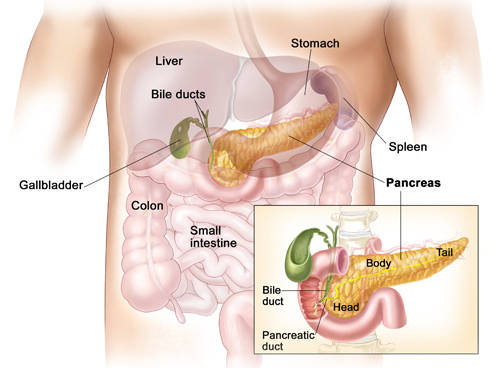Pancreatic Cancer
For Patients
Pancreatic cancer is relatively uncommon, accounting for only 2.5% of all cancer cases in Australia. Therefore, some people may not fully understand the role of the pancreas and how cancer can develop here. This section outlines the functions of the pancreas, as well as important information about pancreatic cancer, including possible causes, diagnosis and treatment.
Pancreas Cancer Symptoms
Pancreatic cancer is often difficult to detect due to its anatomical location, in that it is hidden behind other major organs such as the stomach, small intestine, liver, gallbladder and spleen.
Early stages of pancreatic cancer rarely cause symptoms. Symptoms are not often noticed until the cancer is big enough to touch and affect organs nearby.

Early signs of pancreatic cancer include:
- Pain in the upper abdomen
- Loss of appetite
- Nausea and vomiting
- Weight loss
- Changed bowel motions – either diarrhoea or severe constipation
- Yellowish skin and eyes, and dark urine – these signs are caused by a condition called jaundice, which occurs if the tumour blocks the bile duct into the digestive system.
Less common signs include:
- Severe back pain
- Onset of diabetes mellitus – 10-20% of people with pancreatic cancer develop diabetes mellitus as the cancer stops the pancreas from producing insulin properly.
All these symptoms are common to many conditions and may not mean you have pancreatic cancer. However, if you have any of these symptoms and are concerned, please consult with your doctor.
Watch Cancer Council NSW’s video on recognising the symptoms:
